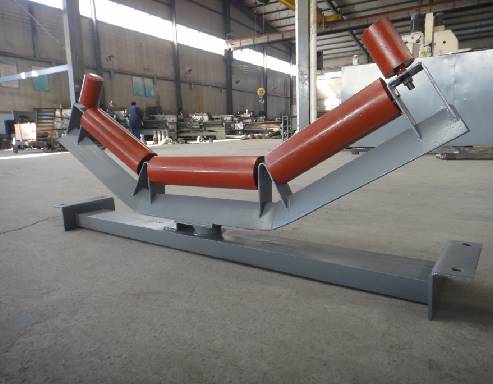 Afrikaans
Afrikaans  Albanian
Albanian  Amharic
Amharic  Arabic
Arabic  Armenian
Armenian  Azerbaijani
Azerbaijani  Basque
Basque  Belarusian
Belarusian  Bengali
Bengali  Bosnian
Bosnian  Bulgarian
Bulgarian  Catalan
Catalan  Cebuano
Cebuano  Corsican
Corsican  Croatian
Croatian  Czech
Czech  Danish
Danish  Dutch
Dutch  English
English  Esperanto
Esperanto  Estonian
Estonian  Finnish
Finnish  French
French  Frisian
Frisian  Galician
Galician  Georgian
Georgian  German
German  Greek
Greek  Gujarati
Gujarati  Haitian Creole
Haitian Creole  hausa
hausa  hawaiian
hawaiian  Hebrew
Hebrew  Hindi
Hindi  Miao
Miao  Hungarian
Hungarian  Icelandic
Icelandic  igbo
igbo  Indonesian
Indonesian  irish
irish  Italian
Italian  Japanese
Japanese  Javanese
Javanese  Kannada
Kannada  kazakh
kazakh  Khmer
Khmer  Rwandese
Rwandese  Korean
Korean  Kurdish
Kurdish  Kyrgyz
Kyrgyz  Lao
Lao  Latin
Latin  Latvian
Latvian  Lithuanian
Lithuanian  Luxembourgish
Luxembourgish  Macedonian
Macedonian  Malgashi
Malgashi  Malay
Malay  Malayalam
Malayalam  Maltese
Maltese  Maori
Maori  Marathi
Marathi  Mongolian
Mongolian  Myanmar
Myanmar  Nepali
Nepali  Norwegian
Norwegian  Norwegian
Norwegian  Occitan
Occitan  Pashto
Pashto  Persian
Persian  Polish
Polish  Portuguese
Portuguese  Punjabi
Punjabi  Romanian
Romanian  Russian
Russian  Samoan
Samoan  Scottish Gaelic
Scottish Gaelic  Serbian
Serbian  Sesotho
Sesotho  Shona
Shona  Sindhi
Sindhi  Sinhala
Sinhala  Slovak
Slovak  Slovenian
Slovenian  Somali
Somali  Spanish
Spanish  Sundanese
Sundanese  Swahili
Swahili  Swedish
Swedish  Tagalog
Tagalog  Tajik
Tajik  Tamil
Tamil  Tatar
Tatar  Telugu
Telugu  Thai
Thai  Turkish
Turkish  Turkmen
Turkmen  Ukrainian
Ukrainian  Urdu
Urdu  Uighur
Uighur  Uzbek
Uzbek  Vietnamese
Vietnamese  Welsh
Welsh  Bantu
Bantu  Yiddish
Yiddish  Yoruba
Yoruba  Zulu
Zulu impact idlers are used in a belt conveyor
Impact Idlers in Belt Conveyors An Overview
Belt conveyors are integral to various industries, facilitating the efficient transportation of materials from one location to another. Among the myriad components that contribute to the operational efficiency of these systems, impact idlers hold a crucial role. These specialized idlers are engineered to mitigate the adverse effects of material impact as it falls onto the conveyor belt, thus ensuring smoother operations and extending the longevity of the entire conveyor system.
Understanding Impact Idlers
Impact idlers, also known as impact rollers or impact beds, are typically positioned at critical points within a conveyor system, most commonly at loading zones. Their primary function is to absorb the energy from the falling materials, which might otherwise lead to belt damage, spillage, or misalignment. By utilizing impact idlers, companies not only protect the conveyor belt but also maintain the integrity of the materials being transported.
Construction and Design
The design of impact idlers is specifically tailored to withstand high-impact forces. These idlers are constructed using robust materials such as steel or durable polymers, often featuring a cushioned design with rubber or other cushioning materials to absorb shock. The choice of materials and design parameters significantly influences the performance and durability of the idlers. Properly engineered impact idlers play a pivotal role in reducing wear and tear on the belt and minimizing noise, contributing to a safer and more efficient operational environment.
Benefits of Using Impact Idlers
1. Reduced Wear and Tear The primary advantage of integrating impact idlers into a belt conveyor system is the reduction in wear and tear on the conveyor belt. By absorbing impact energy, these idlers help prevent premature belt failure, thereby reducing maintenance costs and extending the operational life of the system.
impact idlers are used in a belt conveyor

2. Improved Material Handling Impact idlers assist in controlling the trajectory of materials being loaded onto the conveyor belt, ensuring a smoother flow of materials and preventing spillage. This not only helps maintain a cleaner working environment but also minimizes waste and operational inefficiencies.
3. Noise Reduction Impact idlers are often designed to minimize the noise generated by material impact, creating a quieter work environment. This is especially important in settings where noise regulations are in place or where workers' health and safety are concerns.
4. Increased Safety By reducing the risk of spillage and ensuring materials are properly guided on the conveyor, impact idlers contribute to a safer workplace. Protecting workers from potential hazards associated with loose materials is a critical consideration for any operation.
Challenges and Considerations
While impact idlers offer significant benefits, it is essential to consider factors such as the types of materials being conveyed and the specific loading conditions the belt will encounter. Selecting the correct type of impact idler suitable for the material characteristics and the operational environment is vital. Furthermore, regular maintenance and inspection of impact idlers are crucial to ensure they function optimally over time.
Conclusion
In conclusion, impact idlers play a vital role in enhancing the efficiency and safety of belt conveyor systems. Their ability to absorb shock and minimize wear on the conveyor belt contributes significantly to operational longevity and cost-effectiveness. As industries continue to evolve, investing in high-quality impact idlers can yield considerable returns in terms of performance, safety, and maintenance savings. By prioritizing the implementation of such essential components, companies can ensure their conveyor systems operate at peak efficiency, meeting the demands of modern material handling operations.
-
Revolutionizing Conveyor Reliability with Advanced Rubber Lagging PulleysNewsJul.22,2025
-
Powering Precision and Durability with Expert Manufacturers of Conveyor ComponentsNewsJul.22,2025
-
Optimizing Conveyor Systems with Advanced Conveyor AccessoriesNewsJul.22,2025
-
Maximize Conveyor Efficiency with Quality Conveyor Idler PulleysNewsJul.22,2025
-
Future-Proof Your Conveyor System with High-Performance Polyurethane RollerNewsJul.22,2025
-
Driving Efficiency Forward with Quality Idlers and RollersNewsJul.22,2025





























